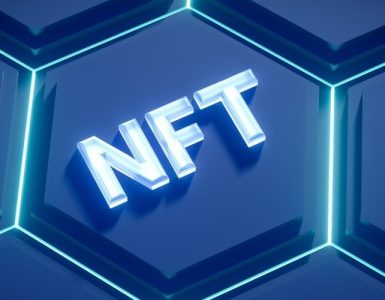The intersection of blockchain technology and renewable energy initiatives is an exciting and innovative new development. Non-fungible tokens (NFTs) are one aspect of blockchain technology that is being leveraged to support renewable energy projects. In this article, we will explore how blockchain technology and NFTs are being used to promote green energy initiatives.
Introduction
The world is facing an increasing demand for clean and renewable energy. Blockchain technology has emerged as a promising solution to some of the challenges faced by the renewable energy industry. Blockchain technology offers transparency, accountability, and security, which are essential for any renewable energy project. NFTs, a type of cryptocurrency, are also being used to incentivize green energy projects. In this article, we will explore how blockchain technology and NFTs are being used to support renewable energy initiatives.
What are NFTs?
NFTs, or non-fungible tokens, are unique digital assets that are stored on a blockchain. They are used to represent ownership of a digital asset, such as a piece of art or a collectible. Each NFT is unique and cannot be replicated or exchanged for another token.
Blockchain and Renewable Energy
Blockchain technology has the potential to revolutionize the renewable energy industry. One of the most significant challenges facing renewable energy projects is the lack of transparency and accountability. Blockchain technology offers a transparent and secure way to track the production and distribution of renewable energy. By using a blockchain, renewable energy projects can ensure that the energy produced is genuine and that it is distributed fairly.
NFTs and Renewable Energy

NFTs are also being used to support renewable energy projects. In some cases, NFTs are used to represent ownership of a portion of a renewable energy project. For example, a solar energy company may issue NFTs to represent ownership of a portion of the energy produced by a particular solar panel. The owners of the NFTs are entitled to a share of the revenue generated by the sale of the energy.
Benefits of NFTs for Renewable Energy
1. Increased Access to Funding
Renewable energy projects often require large amounts of capital to get off the ground. NFTs can provide a new way to raise funds for these projects, allowing individuals and companies to invest in renewable energy without having to put up the entire cost themselves. This can also help to diversify funding sources and reduce reliance on traditional financing methods.
2. Increased Transparency
The use of blockchain technology in NFTs provides increased transparency for investors in renewable energy projects. Investors can track the progress of the project and the use of funds, ensuring that their investment is being used as intended. This transparency can also help to build trust between investors and renewable energy project developers.
3. Environmental Benefits
Investing in renewable energy through NFTs can provide environmental benefits as well. By investing in renewable energy projects, investors are supporting the transition to clean energy and reducing reliance on fossil fuels. This can help to reduce carbon emissions and mitigate the impacts of climate change.
4. Potential for Secondary Market
NFTs can also provide a potential secondary market for renewable energy investments. Investors can buy and sell their NFTs, providing liquidity and potentially increasing the value of their investment. This can also provide an exit strategy for investors who may need to sell their investment before the project is complete.
5. Incentivize Renewable Energy Innovation
Finally, the use of NFTs can incentivize renewable energy innovation. Developers can create unique NFTs for different stages of a project, such as the planning, construction, and operation phases. This can provide incentives for developers to innovate and make the project more efficient, which can ultimately benefit both the environment and the investors.
Case Studies
Several projects are already using NFTs to support renewable energy initiatives. For example, the Renewable Energy Certificate (REC) project is using NFTs to represent ownership of renewable energy certificates. These certificates represent the environmental attributes of one megawatt-hour of renewable energy generated. The project aims to create a transparent and decentralized marketplace for renewable energy certificates.
Another project, called the Sun Exchange, is using NFTs to represent ownership of solar cells. The NFTs represent ownership of a portion of the solar cells and the energy produced by those cells. The owners of the NFTs are entitled to a share of the revenue generated by the sale of the energy.
Future of NFTs and Renewable Energy
The future of NFTs and renewable energy looks bright. As blockchain technology continues to evolve, we can expect to see more innovative uses of NFTs in the renewable energy industry. NFTs have the potential to democratize access to renewable energy and incentivize investment in green energy initiatives.
The Environmental Impact of Blockchain Technology
While blockchain technology has the potential to support renewable energy initiatives, it is important to consider its environmental impact as well. The energy consumption associated with blockchain technology is a significant concern, as it requires a lot of computational power to verify transactions on the blockchain. However, there are efforts underway to develop more energy-efficient blockchain algorithms and protocols.
The Role of Corporate Social Responsibility
As more companies become involved in renewable energy initiatives, there is a growing focus on corporate social responsibility. NFTs and blockchain technology can play a role in this, as they can be used to track the sustainability of a company’s supply chain and verify that they are using renewable energy sources.
NFTs and Carbon Credits
Carbon credits are a type of tradeable certificate that represents a reduction in greenhouse gas emissions. NFTs could be used to represent ownership of carbon credits, creating a transparent and decentralized marketplace for these credits.
The Impact of NFTs on the Art World
While the focus of this article has been on NFTs and renewable energy, it is worth noting that NFTs are also having a significant impact on the art world. NFTs are being used to represent ownership of digital art, creating new opportunities for artists and collectors.
The Future of Renewable Energy Funding
NFTs are just one example of how technology is being used to fund renewable energy initiatives. Crowdfunding platforms, social impact bonds, and green bonds are all examples of alternative financing models that are being used to support the transition towards a more sustainable future.
Overall, there are many different subtopics related to NFTs and green energy that could be explored in more detail. By examining these topics, we can gain a deeper understanding of the potential impact that blockchain technology and NFTs can have on the renewable energy industry.
Smart Contracts and Energy Trading
Smart contracts are self-executing contracts with the terms of the agreement between buyer and seller being directly written into lines of code. In the context of green energy, smart contracts can be used to facilitate peer-to-peer energy trading. By using smart contracts, energy producers can sell excess energy directly to consumers, creating a more efficient and decentralized energy system.
The Potential of Blockchain for Grid Management
As renewable energy sources become more widespread, grid management is becoming increasingly important. Blockchain technology could be used to create a more efficient and secure grid management system, by enabling the integration of renewable energy sources and allowing for real-time tracking of energy production and consumption.
Renewable Energy Microgrids and NFTs
Microgrids are localized energy systems that can operate independently of the larger electrical grid. NFTs could be used to represent ownership of a portion of a renewable energy microgrid, allowing individuals to invest in clean energy production on a small scale.
Carbon Offsetting and NFTs
Carbon offsetting is the practice of reducing greenhouse gas emissions in one place to compensate for emissions produced elsewhere. NFTs could be used to represent ownership of carbon offset credits, allowing individuals to invest in carbon offsetting initiatives.
The Impact of NFTs on Ecosystem Services
Ecosystem services are the benefits that humans derive from natural ecosystems, such as air and water purification, soil fertility, and carbon sequestration. NFTs could be used to represent ownership of ecosystem services credits, incentivizing the conservation and restoration of natural ecosystems.
By examining these subtopics, we can gain a deeper understanding of the potential impact that blockchain technology and NFTs can have on the renewable energy industry and the environment. As the world continues to transition towards a more sustainable future, it will be important to explore new and innovative ways of leveraging technology to support this transition.
NFTs and Sustainable Supply Chain Management
Sustainable supply chain management is the practice of ensuring that the products and services we consume are produced in an environmentally and socially responsible manner. NFTs could be used to track the sustainability of a product’s supply chain, from the sourcing of raw materials to the disposal of waste.
The Potential of NFTs for Carbon Footprint Tracking
Carbon footprint tracking is the practice of measuring the amount of greenhouse gas emissions that are produced by an individual, company, or product. NFTs could be used to track an individual or company’s carbon footprint, allowing them to offset their emissions through the purchase of carbon offset credits.
The Role of NFTs in Energy Storage
Energy storage is becoming increasingly important as the use of renewable energy sources grows. NFTs could be used to represent ownership of energy storage assets, such as batteries, allowing individuals to invest in this critical aspect of the renewable energy system.
The Potential for Decentralized Renewable Energy Markets
Decentralized renewable energy markets are markets where individuals can buy and sell renewable energy directly with each other, without the need for intermediaries. NFTs could be used to represent ownership of renewable energy assets, creating a transparent and decentralized marketplace for clean energy.
The Use of NFTs in Environmental Conservation
NFTs could be used to incentivize environmental conservation initiatives, such as reforestation and habitat restoration. By issuing NFTs that represent ownership of a portion of a conservation project, individuals can invest in these important initiatives and support the preservation of our natural world.
By exploring these subtopics, we can gain a more comprehensive understanding of the potential impact that NFTs and blockchain technology can have on the renewable energy industry and the environment. As we continue to develop new and innovative technologies, it will be important to consider their potential impact on the environment and to explore ways in which they can be used to support sustainability initiatives.
Conclusion
In conclusion, the use of NFTs and blockchain technology is a promising new development in the renewable energy industry. NFTs have the potential to incentivize investment in green energy, democratize access to renewable energy, and create a transparent and decentralized marketplace for renewable energy certificates. As the world continues to transition towards a more sustainable future, the use of NFTs and blockchain technology will play an increasingly important role in supporting renewable energy initiatives.



